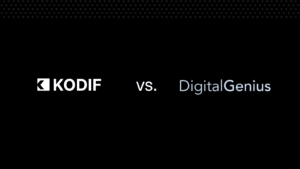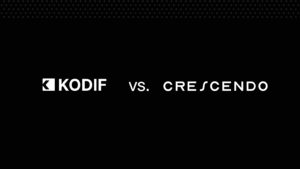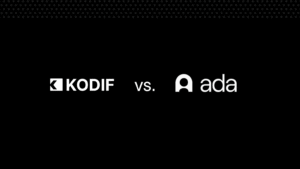Ticket containment rate is one of those metrics that looks great in a board meeting, right next to “ticket deflection” and “average handle time.”
However, containment means nothing if your customers hate you.
The obsession with “high ticket containment” has led a lot of teams down the wrong path, chasing fewer tickets at the cost of worse experiences. It’s the CX version of “winning the battle, losing the war.”
If your automation “contains” a customer by sending them into a loop, redirecting them to an FAQ they’ve already read, or hiding the “contact us” button like it’s state secret, you’re not saving costs, you’re burning trust.
And trust, once lost, costs a lot more than a support ticket.
What ticket containment rate should measure
Ticket containment rate, at its core, measures the percentage of customer interactions resolved without human intervention.
That’s the key word: resolved.
When done right, containment means your automation handled the customer’s issue completely with no escalation, no follow-up, and no frustration. When done wrong, ticket containment just means the customer gave up.
Let’s break it down:
| Scenario | What happens | Dashboard says | Customer feels |
| Bot redirects to generic help article | Customer leaves frustrated | ✅ Contained | ❌ Ignored |
| AI processes refund instantly | Customer receives confirmation | ✅ Contained | ✅ Delighted |
| Chatbot hides escalation path | Customer abandons session | ✅ Contained | ❌ Betrayed |
The difference isn’t the metric, it’s the experience behind it.
The dark side of chasing “containment”
Containment is tempting because it’s simple and measurable, but it’s also dangerously easy to manipulate.
Many “AI-first” CX tools still define ticket containment as “a conversation that doesn’t reach a human.”
That’s a nice story for your slide deck, but if customers are rage-closing tabs or venting on the Internet, your containment success is fake.
Here’s what bad containment looks like in the wild:
- Deflection loops: “Did this answer your question?” → “No” → “Okay, here’s the same answer again.”
- Dead ends: “I can’t help with that. Please email support.” (So… what was the point?)
- Hidden handoffs: The customer can’t find a way to reach a human or worse, they have to restart their entire conversation when they finally do.
Bad containment doesn’t reduce volume, it displaces it. Customers still need help; they just get it elsewhere (competitors, Reddit, or a chargeback dispute).
Redefining ticket containment: from volume reduction to resolution rate
At KODIF, we measure ticket containment through resolution. Not “Did they avoid a human?” but “Did they get a complete answer or outcome?”
To achieve that, you need automation that’s capable of real actions, not just canned replies.
Resolution-first containment looks like this:
- The AI initiates refunds, exchanges, and returns automatically.
- It updates subscriptions or reschedules shipments directly in your ecommerce platform.
- It recognizes intent and sentiment, routing only complex or emotional cases to humans.
When your automation can do those things, containment becomes a byproduct of great CX, not a compromise of it.
Action plan: how to increase ticket containment the right way
Here’s a practical 4-step framework CX leaders can use to improve containment without losing quality:
1. Audit what “contained” really means
Look at your current automation data.
- How many contained tickets had follow-ups within 48 hours?
- How many escalations started as “self-service” interactions?
- What’s the CSAT/NPS delta between contained vs. assisted tickets?
If containment correlates with low satisfaction, you’re measuring avoidance, not resolution.
2. Prioritize workflows where action is possible
Focus first on scenarios where automation can deliver real outcomes:
- Returns/exchanges (process and label instantly)
- Subscription edits (pause, skip, swap, or change billing cycle)
- Shipping inquiries (fetch live status or trigger replacements)
- Account updates (address changes, password resets, loyalty points)
Start there, measure resolution, then expand.
3. Make handoffs seamless
Containment isn’t about replacing humans, it’s about letting humans focus where they’re most valuable. When escalation is needed, context should flow automatically to the agent.
No “Can you repeat that?” moments.
4. Track resolution-first KPIs
Move beyond vanity metrics like “containment” and “deflection rate.” Measure also:
- Resolution rate (issues fully solved)
- First contact resolution (FCR)
- CSAT by workflow
- AI-to-human escalation satisfaction gap
If your automation truly drives these metrics up, ticket containment will follow naturally.
The KODIF difference
At KODIF, we’ve built automation designed to do, not just deflect.
Here’s how we make containment meaningful:
- Agentic AI → Takes real actions like refunds, returns, exchanges, loyalty credits, and profile updates.
- Deep ecommerce integrations → Shopify, Recurly, Skio, LoopReturns, Gladly, ShipMonk, and more: because resolving means acting in the systems that matter.
- No-code automation builder → CX teams can create, tweak, and test flows themselves, no engineering bottlenecks, no Jira tickets.
- Smart Insights → Automatically categorize and analyze customer conversations by topic, sentiment, and root cause, turning every “contained” case into learning data for the next.
Containment becomes a sign of system maturity, not a shortcut for cost-cutting.
The takeaway
A high ticket containment rate looks good on paper until you realize what’s actually being contained: your customers’ patience.
Containment is the outcome of resolution, not the substitute for it. Automation should fix problems faster than a human could, not frustrate customers into silence.
When you build resolution-first, containment becomes effortless. And when you focus on outcomes, every metric—CSAT, retention, AOV—starts to climb with it.
Want to see what KODIF looks like when it comes to containing tickets the right way? Book a demo, we promise we won’t bite.









